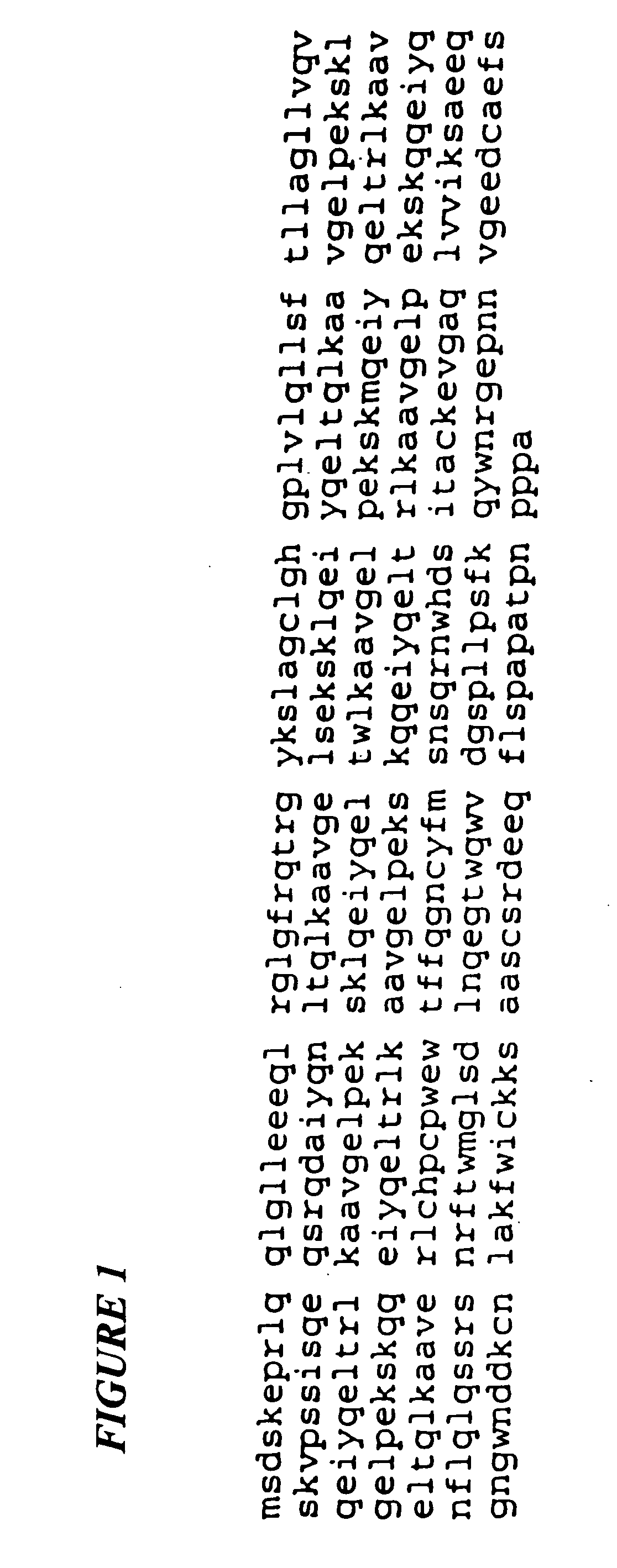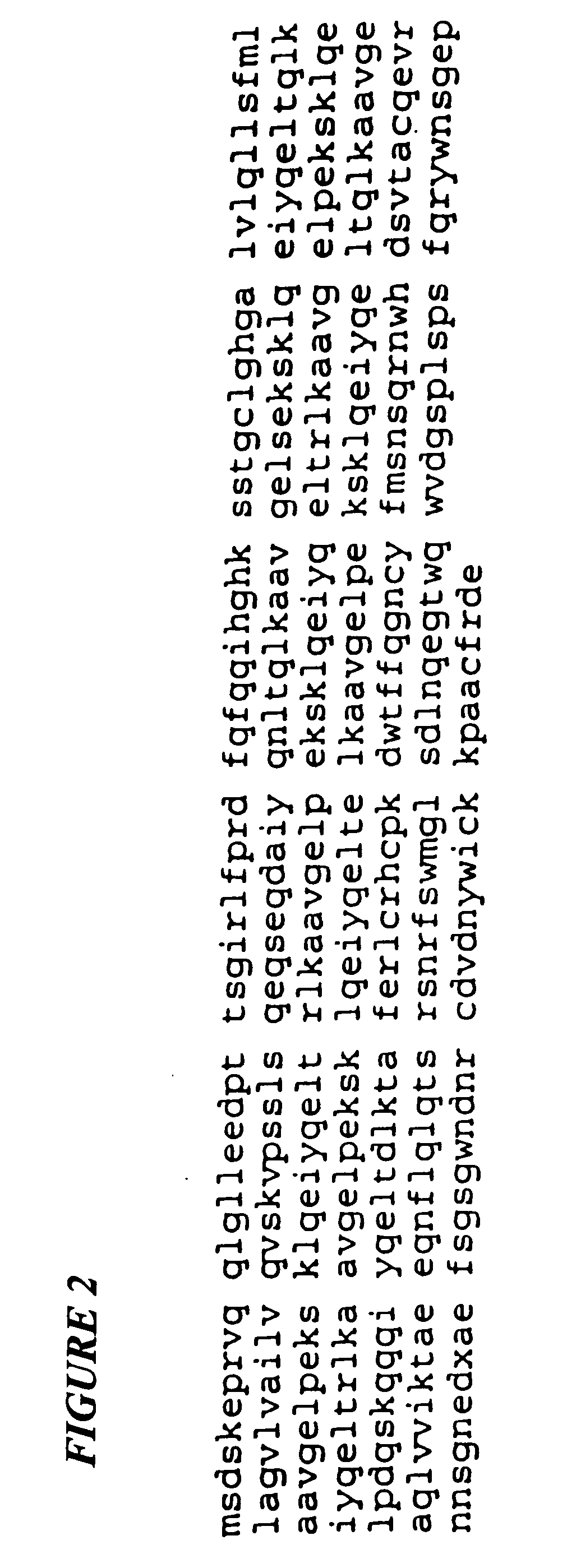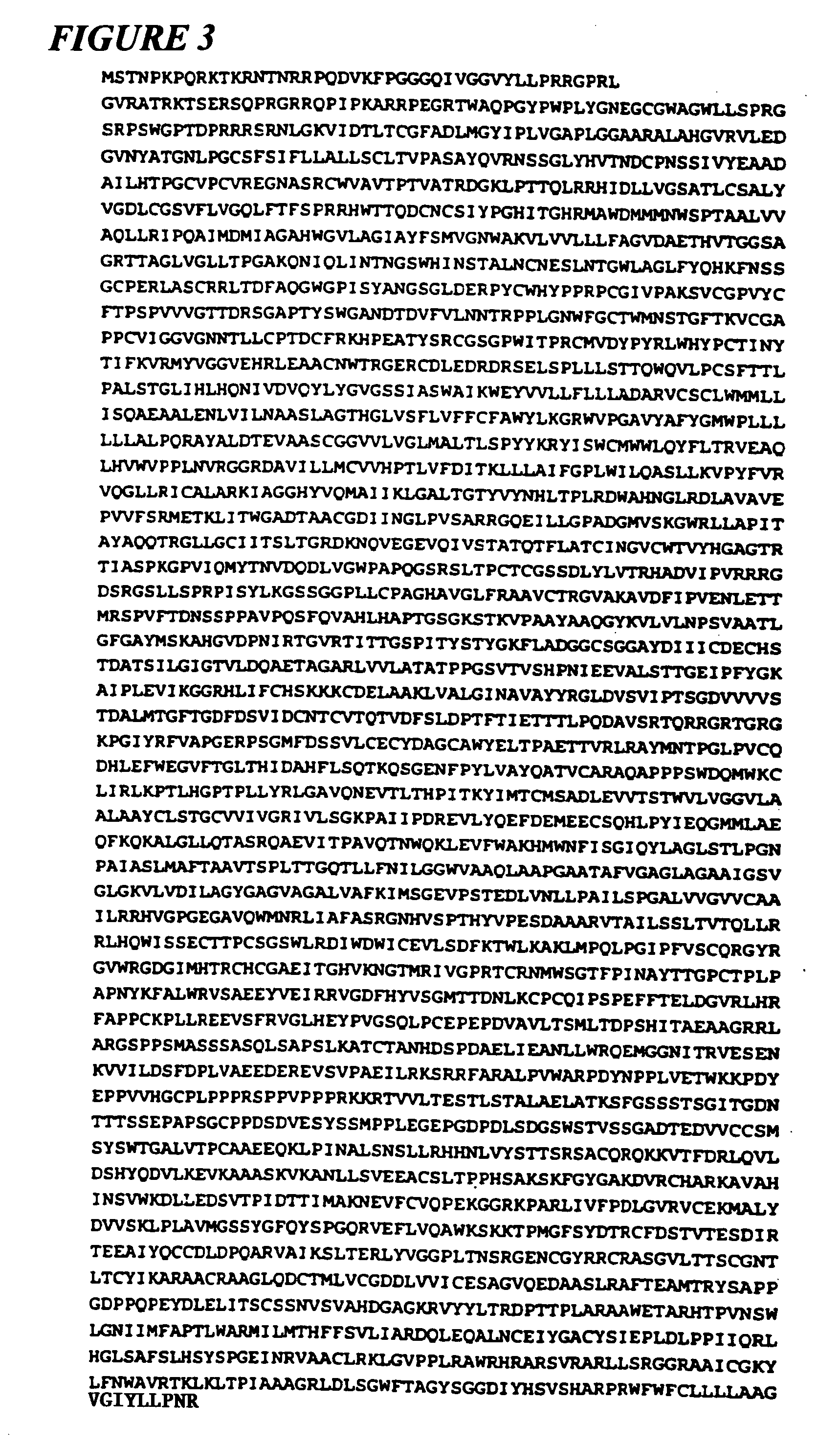Uses of DC-SIGN and DC-SIGNR for inhibiting hepatitis C virus infection
a technology of hepatitis c virus and dcsignr, which is applied in the direction of instruments, antibody medical ingredients, peptide sources, etc., can solve the problems of ineffective treatment of all infected individuals, severe and life-threatening toxicities, and insufficient vaccine availability, so as to prevent hepatocellular carcinoma and treat or prevent hepatocellular carcinoma
- Summary
- Abstract
- Description
- Claims
- Application Information
AI Technical Summary
Benefits of technology
Problems solved by technology
Method used
Image
Examples
Embodiment Construction
class="d_n">[0152] This invention provides a method of inhibiting HCV infection of a cell susceptible to HCV infection which comprises contacting the cell with an amount of a compound effective to inhibit binding of an HCV envelope glycoprotein to a DC-SIGN protein present on the surface of the cell, so as to thereby inhibit HCV infection of the cell susceptible to HCV infection. This invention provides a method of inhibiting HCV infection of a cell susceptible to HCV infection which comprises contacting the cell with an amount of a compound effective to inhibit binding of an HCV envelope glycoprotein to a DC-SIGNR protein present on the surface of the cell, so as to thereby inhibit HCV infection of the cell susceptible to HCV infection.
[0153] Cells which are susceptible to HCV infection may bind virus through DC-SIGN and / or DC-SIGNR molecules. In addition, cells which are not susceptible to HCV infection may bind virus through DC-SIGN and / or DC-SIGNR molecules. Bound virus is then ...
PUM
| Property | Measurement | Unit |
|---|---|---|
| body weight | aaaaa | aaaaa |
| body weight | aaaaa | aaaaa |
| body weight | aaaaa | aaaaa |
Abstract
Description
Claims
Application Information
 Login to View More
Login to View More - R&D
- Intellectual Property
- Life Sciences
- Materials
- Tech Scout
- Unparalleled Data Quality
- Higher Quality Content
- 60% Fewer Hallucinations
Browse by: Latest US Patents, China's latest patents, Technical Efficacy Thesaurus, Application Domain, Technology Topic, Popular Technical Reports.
© 2025 PatSnap. All rights reserved.Legal|Privacy policy|Modern Slavery Act Transparency Statement|Sitemap|About US| Contact US: help@patsnap.com



